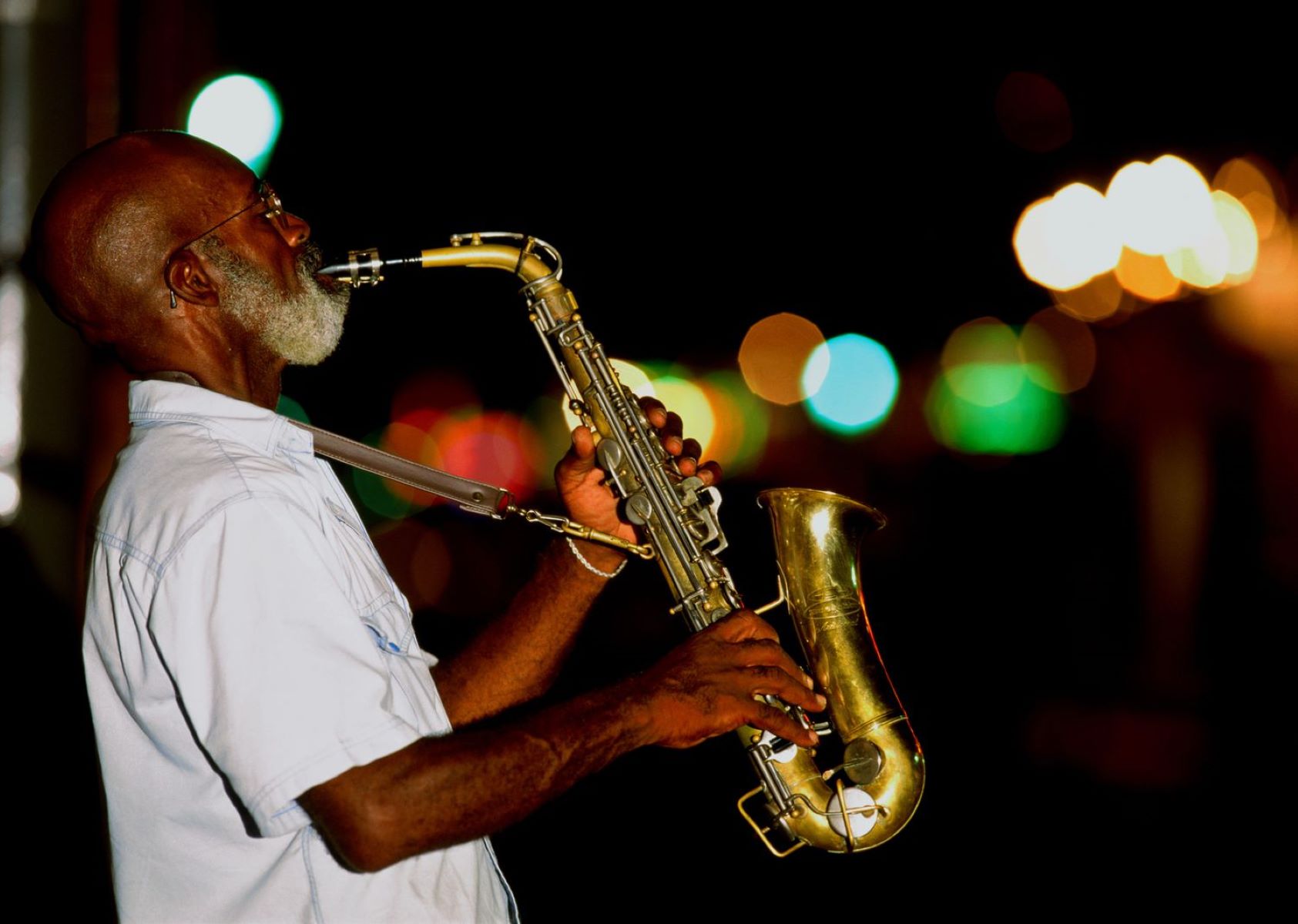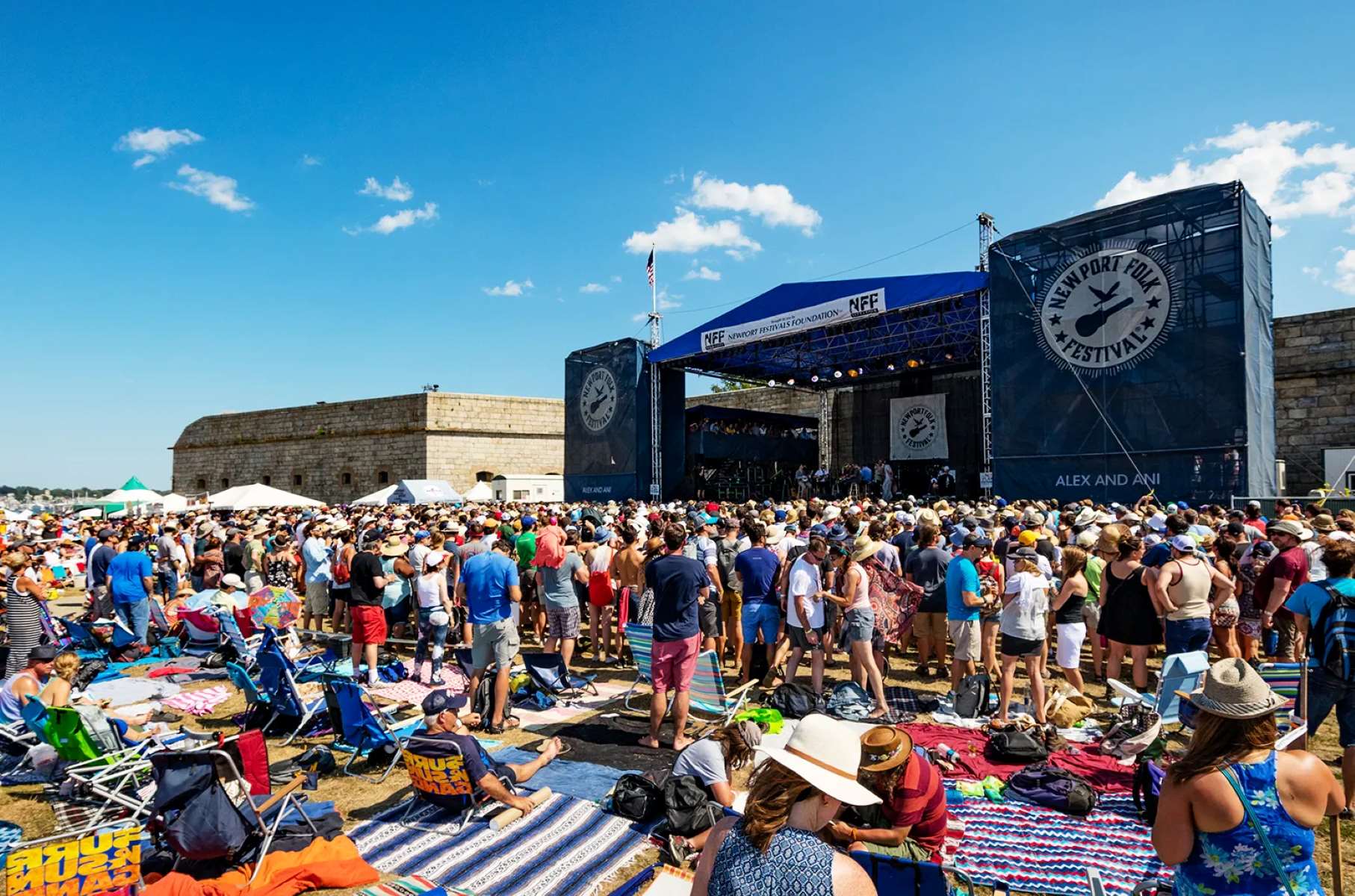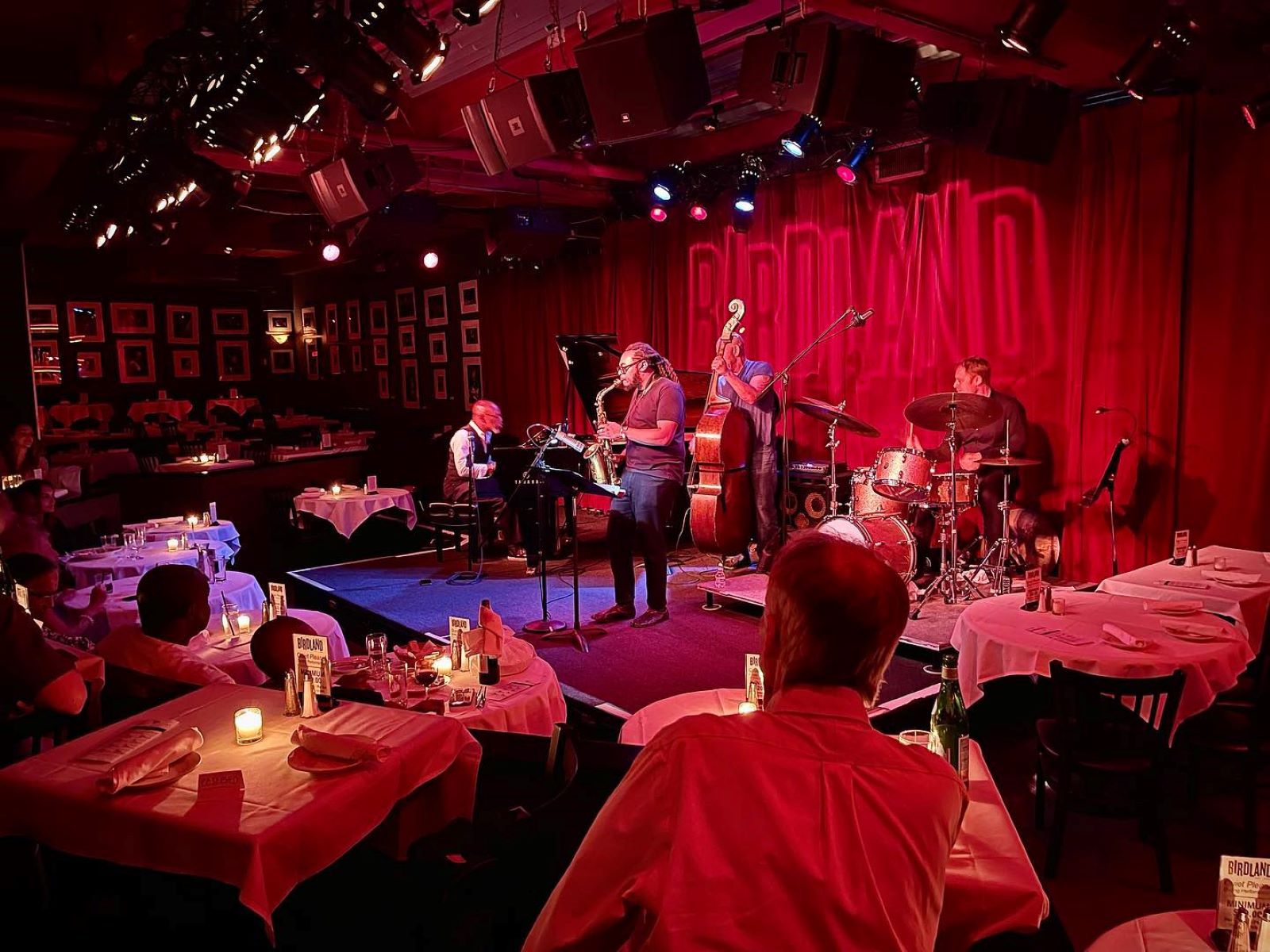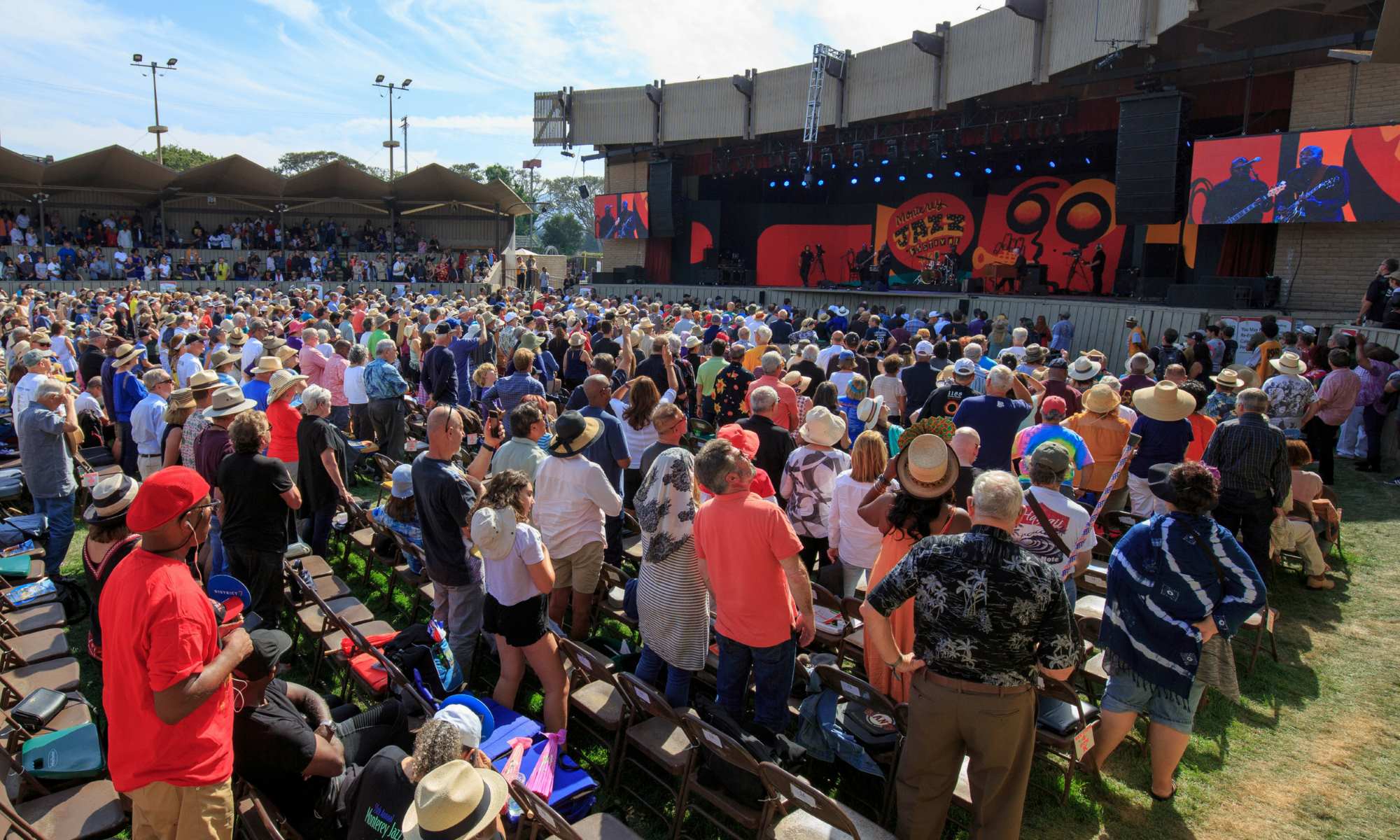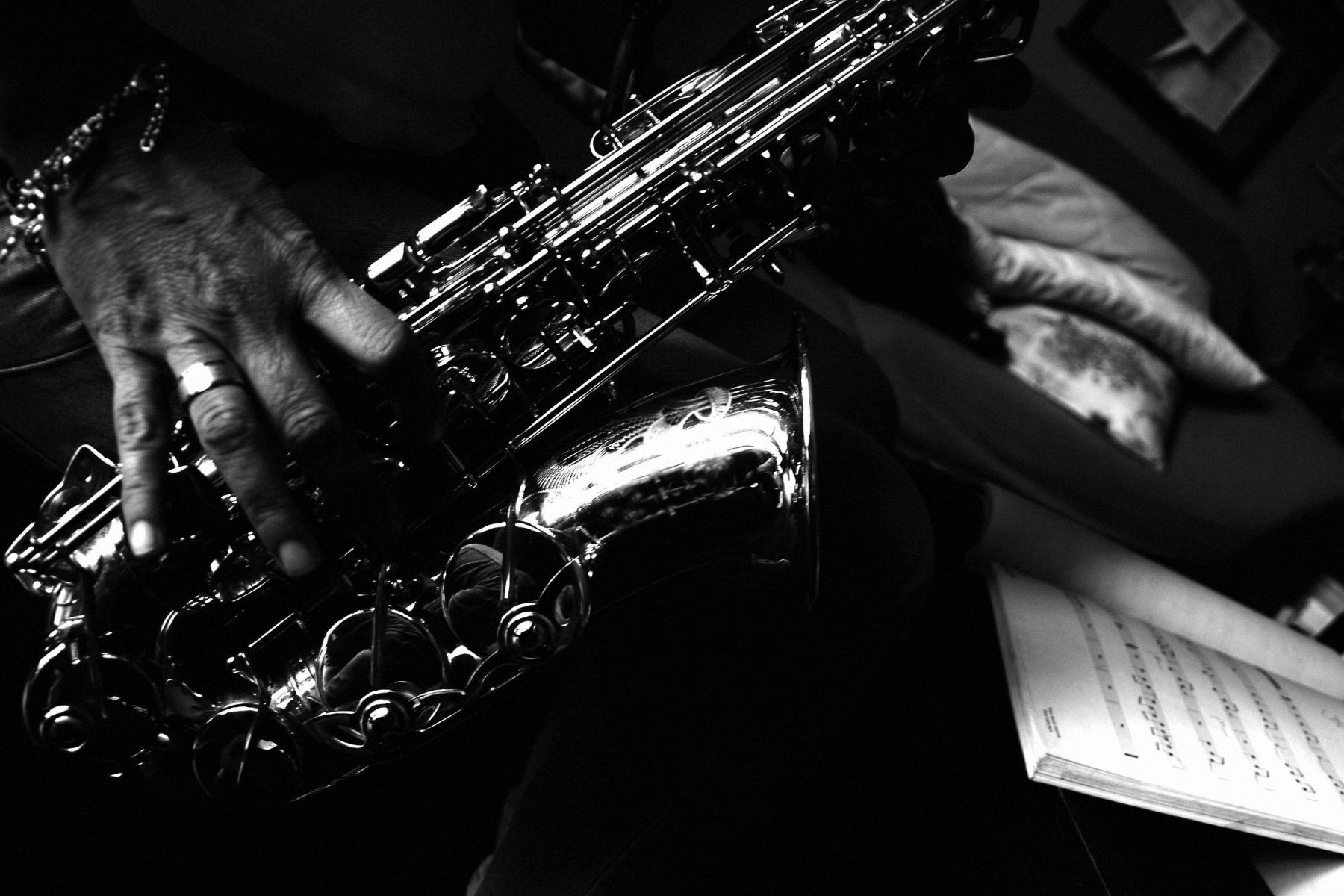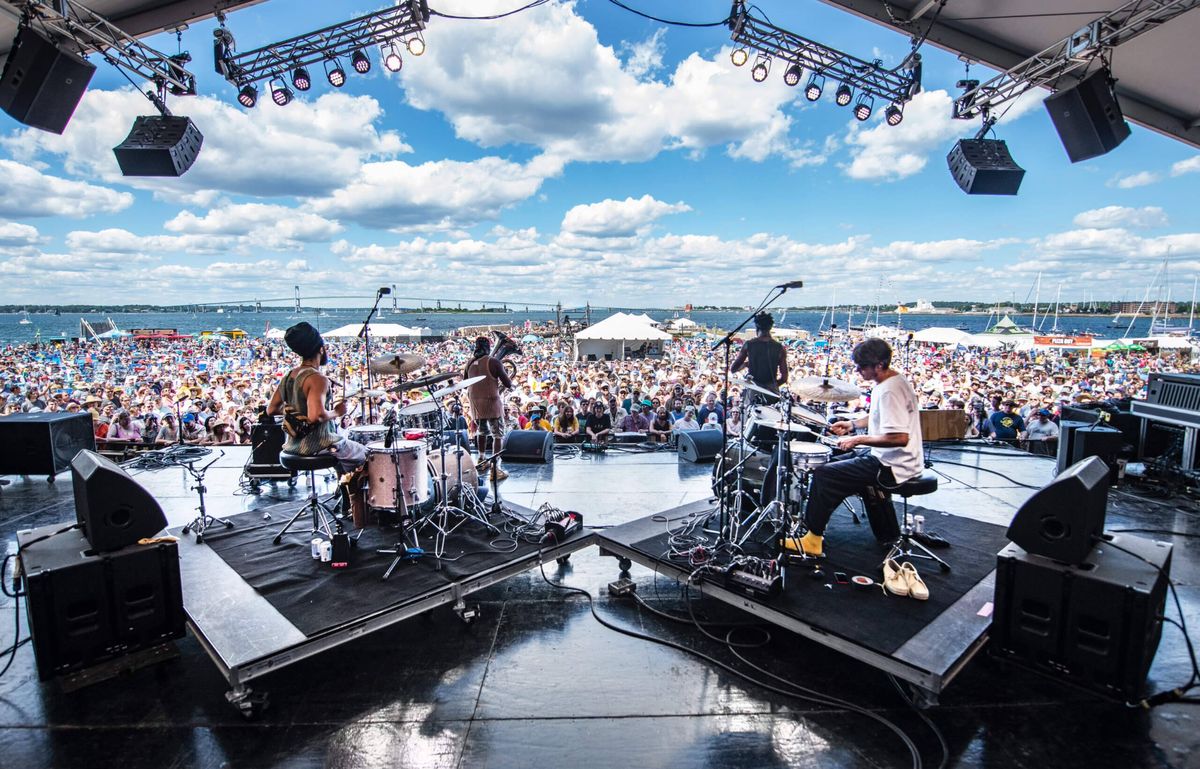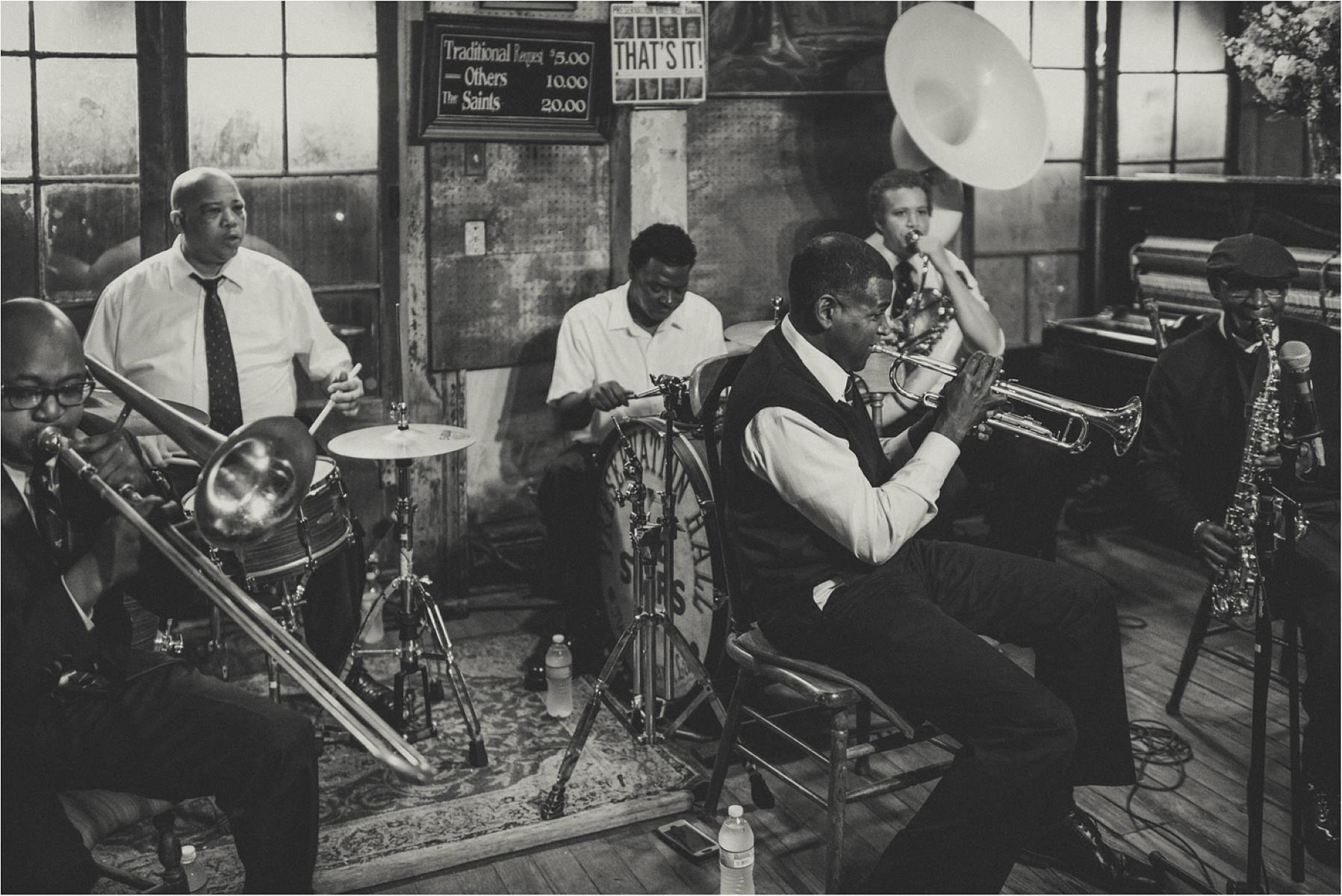

Jazz
When And Where Was Jazz Created
Modified: February 18, 2024
Learn about the origins of jazz and its birthplace. Discover when and where jazz was created, and dive into the rich history of this iconic music genre.
(Many of the links in this article redirect to a specific reviewed product. Your purchase of these products through affiliate links helps to generate commission for AudioLover.com, at no extra cost. Learn more)
Table of Contents
Introduction
Jazz is a genre of music that is characterized by its improvisation, syncopated rhythms, and unique blend of African and European musical traditions. It has its roots in the African American communities in the United States, particularly in New Orleans, and has since spread across the globe, influencing countless musicians and shaping the face of modern music. In this article, we will explore the origins of jazz, its early influences, and how it developed into the diverse range of styles we know today.
When we think of jazz, we often think of smoky nightclubs filled with the smooth sounds of a saxophone or the energetic rhythms of a drum set. But the story of jazz goes much deeper than that. It is a story of cultural fusion, rebellion, and artistic expression. To truly understand jazz, we must delve into the rich history and evolution of this captivating genre.
Through this article, we will take a journey back in time to explore the birth of jazz, the key players who shaped its development, and the cities where it flourished. From the ragtime rhythms of New Orleans to the swing and bebop eras in Chicago and New York City, we will trace the evolution of jazz and its enduring impact on music and culture.
So, get ready to embark on a captivating journey through time and explore the fascinating world of jazz. Let’s dive into the origins of this extraordinary genre and uncover the vibrant history that continues to inspire musicians and jazz enthusiasts around the world.
Origins of Jazz
Jazz is a uniquely American art form that emerged in the late 19th and early 20th centuries. Its roots can be traced back to the African American communities in the southern United States, particularly in New Orleans. The origins of jazz can be found in the cultural fusion of African, European, and Caribbean music traditions that were prevalent in these communities.
One of the key influences on the development of jazz was the music of African slaves and their descendants. The African musical traditions brought to the Americas were rich in rhythm, syncopation, and improvisation. These musical elements would later become defining characteristics of jazz.
In addition to African music, European musical traditions played a significant role in shaping the early stages of jazz. The harmonic and melodic structures of European classical music, as well as the popular music of the time, provided a foundation for jazz musicians to build upon and incorporate into their performances.
Another important influence on the development of jazz was the music of the Caribbean islands, particularly the syncopated rhythms of calypso and the lively dance music known as “rumba.” These Caribbean rhythms found their way into the sounds of early jazz, adding a distinct flavor to the genre.
The cultural melting pot of New Orleans was the ideal breeding ground for the birth of jazz. The city was a vibrant mix of different ethnic groups, including African Americans, Creoles, and European immigrants. The interaction between these communities, along with the availability of musical instruments and performance spaces, created the perfect environment for the development of jazz.
While the exact origins of jazz are difficult to pinpoint, many historians agree that the genre began to take shape in the late 19th century. It was during this time that brass bands, made up of African American musicians, started performing in the streets of New Orleans. These bands played a blend of traditional African rhythms, European military music, and popular tunes of the day.
As time went on, the music evolved, with musicians experimenting with improvisation, exploring new harmonic structures, and pushing the boundaries of traditional musical forms. The early stages of jazz were characterized by lively brass band performances, with a focus on collective improvisation and call-and-response patterns between the musicians.
While New Orleans was the birthplace of jazz, its influence quickly spread to other cities such as Chicago and New York City, where jazz clubs and speakeasies became vibrant hubs of musical innovation and creativity. These cities became breeding grounds for the development of new jazz styles, such as swing, bebop, and cool jazz.
Overall, the origins of jazz can be traced back to the fusion of African, European, and Caribbean musical traditions in the vibrant cultural landscape of New Orleans. The genre’s early development was characterized by experimentation, improvisation, and the blending of diverse musical influences. As jazz continued to evolve, it found its way into the hearts and minds of people around the world, creating a lasting impact on the global music scene.
Early Influences
The development of jazz was heavily influenced by a variety of musical styles and cultural movements. These early influences played a crucial role in shaping the sound and structure of jazz, setting the stage for its evolution into a distinct and original genre.
One of the key early influences on jazz was ragtime music. Ragtime emerged in the late 19th century as a popular style of piano music. It was characterized by its syncopated rhythms and lively melodies. Ragtime had a significant impact on the development of jazz, as musicians began to incorporate its rhythmic elements into their performances.
Another important influence on early jazz was the blues. The blues originated in the African American communities of the southern United States and served as a powerful means of musical expression. The emotional depth and storytelling nature of the blues resonated with jazz musicians, who drew inspiration from its raw intensity and incorporated blues scales and chord progressions into their improvisations.
Social and cultural movements also played a role in shaping the early influences of jazz. The Harlem Renaissance, which took place in the 1920s, was a period of artistic and intellectual growth among African Americans. This movement celebrated African American culture and promoted the artistic expression of jazz musicians. The Harlem Renaissance provided a platform for jazz musicians to showcase their talent and gain recognition.
Another significant early influence on jazz was the Great Migration. This was a wave of migration that took place in the early 20th century, as African Americans moved from the rural South to cities in the North and Midwest in search of better economic opportunities. This mass migration brought together musicians from different regions, allowing for the exchange of musical ideas and the blending of regional styles. The fusion of these different musical traditions contributed to the development of jazz as a uniquely American genre.
The technological advancements of the early 20th century also influenced the development of jazz. The invention of recording technology allowed jazz musicians to capture and share their music with a wider audience. This led to the dissemination of jazz recordings, which in turn helped popularize the genre and expand its reach beyond the confines of live performances.
In summary, the early influences on jazz were diverse and multifaceted. Ragtime, blues, social and cultural movements, and technological advancements all played a significant role in shaping the sound and development of jazz. These influences laid the foundation for the genre’s emergence as a distinct and influential musical form, setting the stage for its continued evolution and lasting impact on the world of music.
The Birth of Jazz
The birth of jazz can be traced back to the vibrant musical scene of New Orleans in the late 19th and early 20th centuries. It was in this melting pot of cultures and traditions that the foundations of jazz were laid, setting the stage for a new genre that would revolutionize the world of music.
At the heart of jazz’s birth was the mix of African, European, and Caribbean musical traditions. African rhythms, brought by enslaved Africans to the Americas, provided the foundation for the syncopated and improvised nature of jazz. European harmonies and melodic structures, along with the influence of classical and popular music, added complexity and depth to the evolving genre. The Caribbean rhythms of calypso and rumba infused jazz with an infectious energy and danceable quality.
The birth of jazz was also profoundly influenced by the social and cultural landscape of New Orleans. The city was a vibrant hub of activity, with a diverse population and a rich musical heritage. The mixing of African Americans, Creoles, and European immigrants resulted in a dynamic interchange of musical ideas and traditions. Street parades, dance halls, and social clubs became the breeding ground for the emerging genre.
One of the pivotal figures in the birth of jazz was Buddy Bolden, a cornet player in New Orleans. Bolden’s brassy and improvisational style set the tone for the future of jazz. He became known for his ability to “rag” or reinterpret popular tunes of the time, infusing them with syncopation and a distinctive New Orleans flavor.
Another influential figure was Jelly Roll Morton, a pianist, composer, and bandleader. Morton is often credited with being one of the first musicians to notate jazz compositions. His innovative approach to arranging and his use of intricate harmonies helped shape the future of jazz.
As the popularity of jazz grew, so did the demand for lively and energetic performances. Jazz bands began to emerge, with musicians improvising and playing off each other’s ideas, creating a dynamic and unpredictable sound. The collective improvisation and call-and-response patterns became hallmarks of jazz performance.
It is important to note that the birth of jazz was not a single event but a gradual evolution. The genre developed organically, influenced by various factors such as the musical traditions, cultural dynamics, and the individual creativity of the musicians. Jazz represented a departure from the music of the past, breaking the boundaries and creating a new form of expression.
Ultimately, the birth of jazz marked a significant turning point in the history of music. Its fusion of African, European, and Caribbean influences, its emphasis on improvisation and syncopation, and its innovative approach to composition and performance all contributed to its distinctiveness.
Today, jazz continues to evolve and captivate audiences around the world. It remains a testament to the power of creativity, cultural exchange, and the enduring legacy of the musicians who gave birth to this extraordinary genre.
Development of Jazz Styles
As jazz continued to evolve and gain popularity, it gave rise to a variety of distinct styles that reflected the changing times and the creative innovations of its musicians. From the swinging rhythms of the Big Band era to the complex harmonies of bebop, each style of jazz brought its own unique flavor to the genre. Let’s explore the development of some of the key jazz styles.
The Swing era, which spanned from the 1930s to the 1940s, was characterized by big bands with a focus on danceable rhythms and tight ensemble playing. It was during this time that jazz reached its peak of popularity, with iconic bands led by figures like Duke Ellington, Count Basie, and Benny Goodman dominating the airwaves and dance halls.
Following the swing era, the emergence of bebop in the 1940s marked a significant shift in jazz. Bebop was a revolutionary style characterized by its fast tempos, complex harmonies, and virtuosic improvisation. Musicians like Charlie Parker, Dizzy Gillespie, and Thelonious Monk pushed the boundaries of jazz, introducing intricate melodies and unconventional chord progressions.
In the 1950s, the cool jazz movement emerged as a reaction to the high energy of bebop. Cool jazz featured a more relaxed and laid-back sound, with an emphasis on intricate arrangements and a subdued approach to improvisation. Artists like Miles Davis and Dave Brubeck were at the forefront of this style, incorporating elements of classical music and showcasing a more introspective and introspective sound.
Throughout the 1960s and 1970s, jazz continued to evolve and branch out into new directions. Free jazz emerged as a bold and experimental style, characterized by its disregard for traditional musical structures and its emphasis on collective improvisation. Artists like Ornette Coleman and John Coltrane pushed the boundaries of what jazz could be, exploring new sounds and techniques.
Fusion, a genre that emerged in the late 1960s and 1970s, blended jazz with elements of rock, funk, and R&B. Musicians like Miles Davis and Herbie Hancock embraced electric instruments and incorporated elements of popular music into their compositions, creating a more groove-oriented and accessible sound.
As we entered the 21st century, jazz continued to be a vibrant and evolving genre. Contemporary jazz artists embraced a wide range of influences, blending jazz with elements of hip-hop, electronic music, and world music to create a fusion of styles that reflected the diverse musical landscape of the modern era.
The development of jazz styles is a testament to the creative spirit and versatility of the genre. Each style represents a unique chapter in the evolution of jazz, showcasing the innovative approaches and groundbreaking ideas of its musicians.
Today, jazz remains a vibrant and influential genre, with artists continuing to push the boundaries of the music and find new ways to express themselves. Whether it’s the smooth sounds of contemporary jazz or the timeless classics of the swing era, the development of jazz styles has left an indelible mark on the musical landscape and continues to inspire generations of musicians and music lovers.
Jazz Spreads and Evolves
As jazz gained popularity and critical acclaim, it began to spread beyond its birthplace of New Orleans and evolve into different styles and subgenres. The early 20th century saw jazz migrate to other cities in the United States and eventually make its way across the globe, leaving a lasting impact on the world of music.
One of the earliest cities to embrace jazz outside of New Orleans was Chicago. In the 1920s, Chicago became a thriving hub for jazz, with its vibrant nightlife and speakeasies providing a stage for musicians to showcase their talents. The Chicago style of jazz was characterized by its energetic and driving rhythms, with musicians like Louis Armstrong and Jelly Roll Morton leading the way.
Another important city in the development of jazz was New York City. In the 1920s and 1930s, the Harlem Renaissance brought a flourishing of African American arts and culture, including jazz. Harlem became a hotbed of jazz activity, with legendary venues like the Cotton Club and the Apollo Theater hosting performances by major jazz artists, including Duke Ellington and Count Basie.
During the 1930s and 1940s, jazz underwent a major evolution with the advent of the big band era. Big bands, characterized by large ensembles with brass and woodwind sections, became popular, and jazz took on a more orchestrated and polished sound. Big band leaders like Glenn Miller and Artie Shaw brought jazz into the mainstream, reaching new audiences and solidifying its status as a significant genre in the music industry.
Outside of the United States, jazz began to make its mark on the global music scene. Musicians from Europe, such as Django Reinhardt and Stephane Grappelli, embraced jazz and incorporated it into their unique musical traditions. In Latin America, artists like Antonio Carlos Jobim and Tito Puente fused jazz with traditional Latin rhythms, creating a subgenre known as Latin jazz.
As jazz continued to spread, it also continued to evolve. The 1940s and 1950s saw the emergence of cool jazz, a more relaxed and introspective style that incorporated elements of classical music. Artists like Miles Davis and Dave Brubeck were at the forefront of this movement, experimenting with unusual time signatures and complex harmonies.
In the 1960s and 1970s, with the rise of the civil rights movement and social unrest, jazz became a means of expressing political and social ideas. Musicians like John Coltrane and Charles Mingus used their music as a platform to address issues of racial inequality and injustice, pushing the boundaries of jazz and experimenting with new sounds and techniques. This era also gave rise to fusion, a fusion of jazz with elements of rock, funk, and R&B.
In recent years, jazz has continued to evolve, with artists incorporating influences from hip-hop, electronic music, and world music into their compositions. The genre remains a vibrant and dynamic form of expression, with musicians pushing the boundaries and exploring new territories.
Jazz’s spread and evolution have left an indelible mark on the world of music. Its influence can be heard in many genres, from pop and rock to hip-hop and electronic music. Jazz’s ability to adapt and fuse with different musical styles has ensured its longevity and relevance in the ever-changing music landscape.
As we look to the future, jazz will undoubtedly continue to evolve and captivate audiences around the world. It is a testament to the power of creativity, collaboration, and cultural exchange, and it will continue to inspire and influence musicians for generations to come.
Jazz in New Orleans
New Orleans is often hailed as the birthplace of jazz and holds a special place in the history and development of this iconic genre. The city’s vibrant cultural mix, rich musical heritage, and unique social environment provided the perfect conditions for the emergence of jazz.
In the late 19th and early 20th centuries, New Orleans was a melting pot of different cultures, including African, European, and Caribbean. It was in this diverse and dynamic city that the musical traditions of these cultures intermingled and gave birth to jazz.
One of the key factors that contributed to the development of jazz in New Orleans was the social environment. The city had a thriving nightlife scene, with countless bars, dance halls, and brothels that became venues for jazz musicians to perform. These establishments provided a platform for musicians to experiment, collaborate, and perfect their craft.
Street parades and processions were also integral to the development of jazz in New Orleans. These vibrant and lively events brought together different communities and provided a space for musicians to showcase their talent. Brass bands played a significant role in these parades, with their energetic and improvisational performances setting the foundation for the jazz sound.
One of the most influential figures in the early jazz scene of New Orleans was Buddy Bolden. Bolden, an innovative cornet player, was known for his powerful and improvisational style, as well as his ability to create new rhythms and melodies on the spot. Though not many of his recordings exist, his influence on the development of jazz cannot be overstated.
New Orleans was also home to other notable jazz pioneers, including Louis Armstrong. Born and raised in the city, Armstrong went on to become one of the most influential jazz musicians of all time. His virtuosic trumpet playing, distinctive voice, and charismatic stage presence helped popularize jazz around the world.
Another significant aspect of jazz’s development in New Orleans was the influence of the African American and Creole communities. These communities played a crucial role in shaping the sound and style of jazz, infusing it with the unique rhythms, melodies, and cultural expressions of their heritage.
The music of New Orleans jazz was characterized by its syncopated rhythms, polyphonic texture, and improvised solos. Musicians would engage in collective improvisation, with each player contributing their own melodic lines and embellishments. These lively and energetic performances captivated audiences and set the stage for the future evolution of jazz.
While New Orleans holds a special place in the history of jazz, the genre’s popularity and influence soon spread beyond the city. Musicians from New Orleans took their music to other cities, such as Chicago and New York, where jazz continued to evolve and flourish.
To this day, New Orleans remains a hub of jazz activity, with vibrant live music scenes, festivals, and preservation efforts. The city’s deep-rooted connection to jazz is celebrated and cherished, attracting tourists and musicians alike who come to experience the rich history and vibrant sounds of this remarkable genre.
Jazz in New Orleans is a testament to the power of cultural exchange, creativity, and the rich musical heritage of the city. It laid the foundation for the development of jazz as a genre and continues to inspire generations of musicians and music lovers around the world.
Jazz in Chicago
When discussing the history of jazz, it is impossible to overlook the significant impact that Chicago had on the development and evolution of the genre. As early as the 1920s, Chicago emerged as a thriving hub for jazz musicians, offering a vibrant and diverse musical scene that fostered innovation and creativity.
One of the key factors that contributed to the rise of jazz in Chicago was the city’s booming nightlife and entertainment industry. Chicago was home to a plethora of speakeasies, dance halls, and nightclubs that provided a platform for jazz artists to showcase their talents and connect with audiences. Venues like the Sunset Cafe, Dreamland Cafe, and the famous Green Mill Lounge hosted performances by jazz legends, attracting both local enthusiasts and visitors from far and wide.
Another instrumental factor in the development of jazz in Chicago was the migration of African American musicians from the South, particularly from New Orleans. As they moved north in search of better economic opportunities, these musicians brought their unique styles and influences to the city, contributing to a rich and diverse jazz scene. This influx of talent helped shape the Chicago style of jazz, characterized by its energetic and propulsive rhythms.
During the 1920s, Chicago became a popular destination for jazz musicians who were looking to escape the strict regulations on alcohol consumption in other parts of the country. The era of Prohibition allowed for the growth of illegal drinking establishments known as speakeasies, where live jazz music flourished. It was in these underground venues that jazz musicians had the freedom to experiment with their music, often pushing the boundaries of traditional jazz and exploring new sounds and techniques.
Chicago jazz also benefited from an influx of talented musicians from other parts of the country, including New York City. Legendary figures such as Louis Armstrong and Earl Hines made their mark in the Chicago jazz scene, contributing to its vibrancy and expanding its influence.
One of the distinctive features of Chicago jazz was the presence of larger ensembles known as big bands. These bands, consisting of multiple saxophones, trumpets, trombones, and a rhythm section, created a rich and dynamic sound that became synonymous with the city’s jazz scene. The big band era brought about iconic groups led by musicians like Fletcher Henderson, Benny Goodman, and Count Basie, solidifying Chicago’s reputation as a center for jazz innovation.
As time progressed, Chicago continued to produce influential jazz musicians and shape the course of the genre. Artists like Nat King Cole, Gene Ammons, and Ramsey Lewis emerged from the Chicago scene and went on to achieve great success and influence in the world of jazz.
Today, Chicago remains a vibrant city for jazz, with numerous clubs, festivals, and educational institutions dedicated to preserving and promoting the art form. The Chicago Jazz Festival, held annually in Millennium Park, showcases both local talent and internationally renowned artists, attracting jazz enthusiasts from around the world.
The impact of jazz in Chicago goes far beyond the city itself. Its influence can be felt in other genres of music, such as blues and rock and roll, with musicians from these genres drawing inspiration from the rhythmic complexities and improvisational spirit of jazz.
Jazz in Chicago has left an indelible mark on the genre, contributing to its evolution and shaping its future. The city’s vibrant musical heritage, rich history, and dedication to preserving jazz have solidified Chicago’s place as a major player in the world of jazz.
Jazz in New York City
When it comes to the history of jazz, few cities have played as pivotal a role as New York City. The bustling metropolis served as a major center for jazz innovation, attracting talented musicians from around the country and fostering a vibrant and influential jazz scene.
In the early 20th century, New York City became a magnet for jazz musicians who sought to make a name for themselves and take part in the thriving music industry. The city offered a multitude of performance venues, ranging from intimate clubs to sophisticated concert halls, where jazz musicians could showcase their talents and connect with audiences.
During the 1920s and 1930s, Harlem emerged as the epicenter of jazz activity in New York City. The neighborhood’s vibrant cultural scene and its world-famous venues, such as the Cotton Club and the Apollo Theater, attracted both established and up-and-coming jazz artists. Musicians like Duke Ellington, Count Basie, and Cab Calloway found fame and success in Harlem, revolutionizing jazz with their innovative compositions and magnetic performances.
Another influential destination for jazz in New York City was 52nd Street. In the 1940s, this street became a hotbed of jazz activity, with clubs and bars showcasing the best and brightest of the genre. Jazz legends like Charlie Parker, Dizzy Gillespie, and Thelonious Monk performed regularly on 52nd Street, pushing the boundaries of the music and creating a new style known as bebop.
The influence of New York City on jazz extended beyond the performances. The city became a hub for jazz recording studios, providing the opportunity for musicians to document their innovative ideas and compositions. Labels like Blue Note Records and Verve Records captured the groundbreaking sounds of jazz, ensuring that its impact would live on for future generations.
New York City also played host to major jazz festivals, further solidifying its place as a jazz capital. The Newport Jazz Festival and the Charlie Parker Jazz Festival drew in large crowds and presented a wide range of jazz styles and artists, celebrating the diversity and vibrancy of the genre.
In addition to the established venues and festivals, New York City’s vibrant and diverse neighborhoods, such as Greenwich Village and the Lower East Side, provided spaces for jazz musicians to experiment, collaborate, and thrive. Jazz musicians of varying styles and backgrounds connected in these communities, contributing to the fusion of styles and the cross-pollination of ideas that defined the jazz scene in the city.
Today, jazz continues to thrive in New York City, with numerous clubs, educational institutions, and cultural organizations dedicated to the preservation and promotion of the genre. The Jazz at Lincoln Center program, led by artistic director Wynton Marsalis, has become a beacon for jazz education and showcases some of the finest jazz performances in the world.
The influence of jazz in New York City extends far beyond its borders. The city’s vibrant jazz scene has shaped the course of the genre, influencing musicians around the world and leaving an indelible mark on the history and evolution of jazz.
In summary, New York City has been a cradle of innovation and creativity for jazz. Its wide array of venues, diverse neighborhoods, and pioneering musicians have made it a legendary destination for jazz enthusiasts and musicians alike. New York City’s influence on the development of jazz is undeniable, and its jazz scene continues to flourish, keeping the spirit of the genre alive for generations to come.
Jazz in the 1930s and 1940s
The 1930s and 1940s marked an important period of evolution and transition for jazz. As the world faced the challenges of the Great Depression and World War II, jazz continued to reflect the changing times and adapt to new musical trends and social dynamics.
During the 1930s, jazz experienced a shift from the exuberant sound of the Roaring Twenties to a more polished and sophisticated style. This era, often referred to as the Swing era, saw the rise of big bands and the dominance of dance-oriented jazz music. Big band leaders like Duke Ellington, Count Basie, and Benny Goodman captivated audiences with their powerful arrangements, tight ensemble playing, and virtuosic solos.
Swing music became the soundtrack of the era, providing an escape from the hardships of the Great Depression. People flocked to ballrooms and dance halls to enjoy the upbeat rhythms and infectious melodies of swing. The music of the swing era showcased a seamless blend of jazz, pop, and dance music, appealing to a wide audience and solidifying jazz’s popularity.
In addition to the swing movement, the 1930s also saw the emergence of vocal jazz. Singers like Billie Holiday, Ella Fitzgerald, and Frank Sinatra brought a new level of artistry and expression to jazz, captivating listeners with their soulful interpretations and distinctive voices.
The 1940s introduced significant changes to the jazz landscape. As World War II engulfed the globe, many big band leaders and musicians enlisted in the military, leading to a decline in the popularity of big bands. However, this period also saw the emergence of a new style known as bebop.
Bebop was a revolutionary approach to jazz that emphasized intricate melodies, complex harmonies, and fast tempos. Musicians like Charlie Parker, Dizzy Gillespie, and Thelonious Monk pushed the boundaries of jazz improvisation, introducing intricate melodic lines and unconventional chord progressions. Bebop was an art form characterized by its virtuosity, demanding technical skill and a deep understanding of harmonies.
Bebop represented a departure from the commercial aspects of swing music, targeting a more sophisticated and attentive audience. Its focus on complex harmonies and intricate improvisation required active listening and a deeper appreciation for the nuances of the music.
While bebop provided a new avenue for artistic expression, it was not as commercially successful as the swing era. Nevertheless, bebop laid the groundwork for future jazz developments, serving as a catalyst for modal jazz, avant-garde jazz, and other experimental styles.
Despite the challenges of war and the shifting musical landscape, jazz remained a vibrant and influential form of expression in the 1930s and 1940s. It provided solace, joy, and a sense of unity during a tumultuous period in history. The swing era brought people together on the dance floor, while bebop challenged musicians and listeners to engage with jazz in a deeper and more intellectual way.
Overall, the 1930s and 1940s were transformative decades for jazz. The swing era brought jazz into the mainstream, while the emergence of bebop pushed the boundaries of the genre and set the stage for future innovation. Jazz continued to adapt and evolve, reflecting the social and cultural shifts of the time and leaving an indelible mark on the world of music.
Conclusion
Jazz is a genre of music that has captivated audiences around the world with its unique blend of improvisation, syncopated rhythms, and cultural fusion. From its origins in the African American communities of New Orleans to its spread and evolution in cities like Chicago and New York City, jazz has left an indelible mark on the history of music.
The birth of jazz in New Orleans was a result of the interplay of African, European, and Caribbean musical traditions, as well as the vibrant social environment of the city. Jazz emerged as a means of artistic expression and rebellion, with musicians like Buddy Bolden and Jelly Roll Morton setting the stage for its development.
The influences on jazz were diverse and multifaceted, drawing from ragtime, blues, social and cultural movements, and technological advancements. These early influences laid the foundation for jazz to become a dynamic and transformative genre that broke the boundaries of traditional music.
Jazz spread across the United States and became a global phenomenon, with cities like Chicago and New York City playing crucial roles in its development. The swing era brought jazz into the mainstream, while the emergence of bebop pushed the boundaries of improvisation and paved the way for future experimentation and innovation.
Throughout its history, jazz has continued to evolve, incorporating influences from various musical styles and cultural movements. From the cool jazz of the 1950s to the experimentation of free jazz in the 1960s and 1970s, jazz has remained a vibrant and ever-changing genre.
Today, jazz remains a vibrant force in the music industry, constantly pushing boundaries and captivating audiences with its improvisation, complex harmonies, and dynamic performances. Its influence can be heard in various genres, and its legacy continues to inspire and shape the future of music.
In conclusion, jazz is more than just a genre of music. It is a cultural phenomenon that represents the fusion of diverse influences, individual creativity, and the spirit of innovation. Jazz has had a profound impact on the world of music, bringing people together, crossing cultural boundaries, and inspiring generations of musicians and music lovers. The rich history and evolution of jazz serve as a testament to the power of creativity, collaboration, and the enduring legacy of this extraordinary genre.

